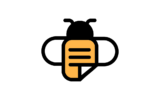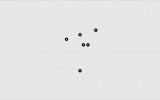How Could Software with AI Revolutionise Graphic Design?
Artificial intelligence (AI) comes to us in different forms: writing, designing, and voice-over – and that list continues to grow by the day.
However, the most controversial side of AI applications seems to be in the field of graphic design.
It has divided opinion among professional designers, with some continuing to frown upon its usage because of such issues as intellectual property or artwork being used to train the generator algorithms without the permission of the very artists responsible for creating that artwork.
Others have jumped right in, taking advantage of browser-based AI tools like Khroma, for example, to come up with endless colour schemes to be used in their projects – from UX/UI to visual identity and branding.
Ordinary laypersons also seem more than happy with the new technology, readily and rapidly creating – with little or no training – design assets in free-to-use platforms like Canva with its Magic Design AI generation tool.
So today, we will explore the benefits of integrating AI for web development in graphic design and whether AI will revolutionise or bring turbulence into the design industry.
Current State of AI Graphic Design
According to Future Market Insights, the global AI design tools market will surpass $24.7 billion by 2033, with a growth of 17.3%. While predictions are fairly optimistic, AI use in the graphic industry raises concerns.
As a vivid example, the artwork “Théâtre D’opéra Spatial”, created in Midjourney, took first place in the Colorado State Fair’s annual art competition and got fierce backlash from artists.
Despite the disputes between artists and designers over generative AI, big software developers and platforms like Adobe’s Sensei, Canva, Figma, and others have already integrated AI tools.
AI tools based on machine learning technology are capable of being trained to give desirable results. The more you use AI generative functionality, the more realistic and precise the results. In this sense, we can describe AI graphic design as a fusion of artificial intelligence applied to the software to imitate possible human results/actions in order to generate complex, realistic solutions in response to a given prompt.
Let’s define the design spheres where AI software is present and where it might be augmented in the future to deliver even better results:
Graphic Design
AI technology – whether it’s stand-alone AI platforms like Midjourney or software tools like Adobe Firefly and Photoshop that now come embedded with AI features such as generative fill (or generative recolour and text to vector pattern in the case of Illustrator) – allows graphic designers to rapidly visualise their ideas in a way that was hitherto unprecedented.
Packaging Design
One of the most remarkable cases of AI in packaging design is the popular Nutella Unica campaign in 2017. Graphic designers had to create millions of Nutella jar labels that would have taken months if not years to make manually. But the AI algorithm did the job with a touch of a button. As a result, the company ended up selling over seven million jars in a month!
Web Development
Web development companies and providers are also heavily investing in AI. Integrating AI for web development means simplified processes for coders and better layouts for end users. Corporate businesses across various industries – especially from healthcare, logistics, fintech, and educational organisations – are also keen to integrate new AI features into their websites and applications in order to harness a better user experience for their customers.
UX/UI Design
AI-integrated tools aim to help designers and developers multitask and reduce human errors by automating repetitive tasks. For instance, Uizard – which claims to be “the world’s first AI-powered UI design tool” – is based on AI algorithms and trained to understand graphical UI in the same way that a designer does. By using such platforms, designers can potentially create wireframes, mockups, and prototypes for mobile and web applications in just minutes.
Benefits and Challenges of AI in Graphic Design Software
The most significant concern in the integration of AI software is that one day, it may replace humans. Fear not. Today, many applications can’t multitask without the human hand and won’t bring the desired result without proper training. Moreover, we believe AI software and assistants should be considered helpful tools, not human substitutes. With this positive view in mind, let’s see the main advantages of AI in graphic design:
• AI saves time and eliminates repetitive tasks
• AI can reignite creativity. Artists are often prone to “blank canvas syndrome” where for one reason or another they just can’t seem to come up with anything. Here’s where AI can be deployed to rekindle the imagination
• Graphic design is becoming easier for self-learners. With new AI features and generative technology, anyone can try designing assets for personal use, business, or social media using platforms like Canva.
While there is a definite scope of benefits, AI technology in the design industry brings certain challenges:
Gremlins: Right now, AI-generated imagery is not always perfect – extra fingers on hands, perspective distortion, and asymmetry being a few well known problem areas. Also, creating high quality, print-ready vector artwork – essential for professional graphic designers – is still very much in its infancy.
Dependency on AI: Although AI is good enough to reduce ordinary repetitive tasks and bring new visual ideas, one of the biggest challenges is the possible dependency of artists and designers on AI tools.
The Future of AI in Graphic Design Software: To Be or Not to Be?
Undoubtedly, AI tech in graphic design is here to stay – as witnessed by its rapid uptake by major design software companies such as Adobe who are incorporating it into their products at ever-increasing speeds.
Added to that is its wide-scale usage by laypeople, who are now even able to bypass hiring professional graphic designers by using what are effectively browser-based software tools like the aforementioned Canva to create brand assets for both personal and business usage – including logos.
Neither have all designers been put off from utilising AI-powered design applications in their workflow because of complicated ethical or legal dilemmas. Many have discovered AI to be an incredibly powerful tool for rapid design ideation.
It really looks there is no turning back.








